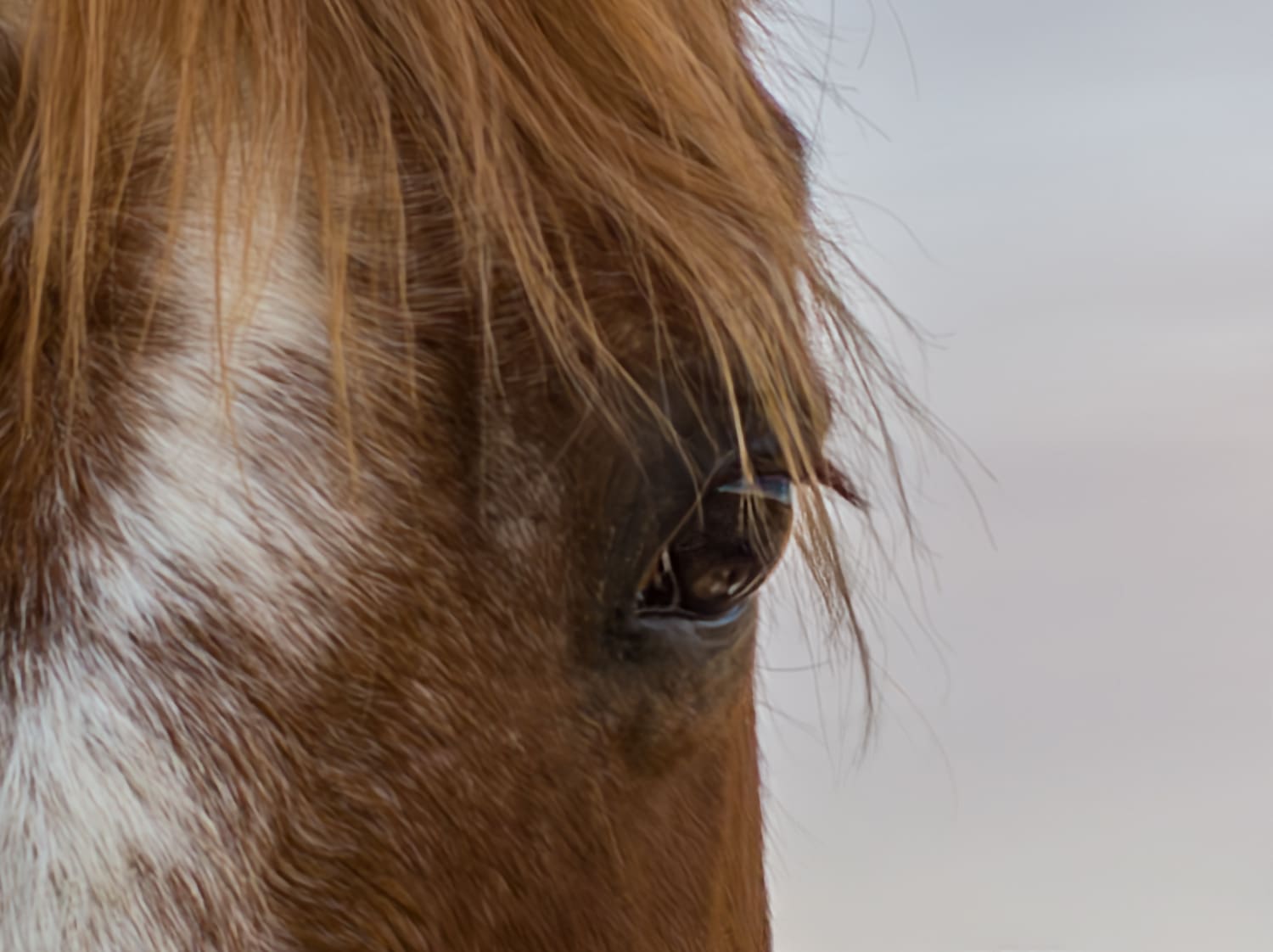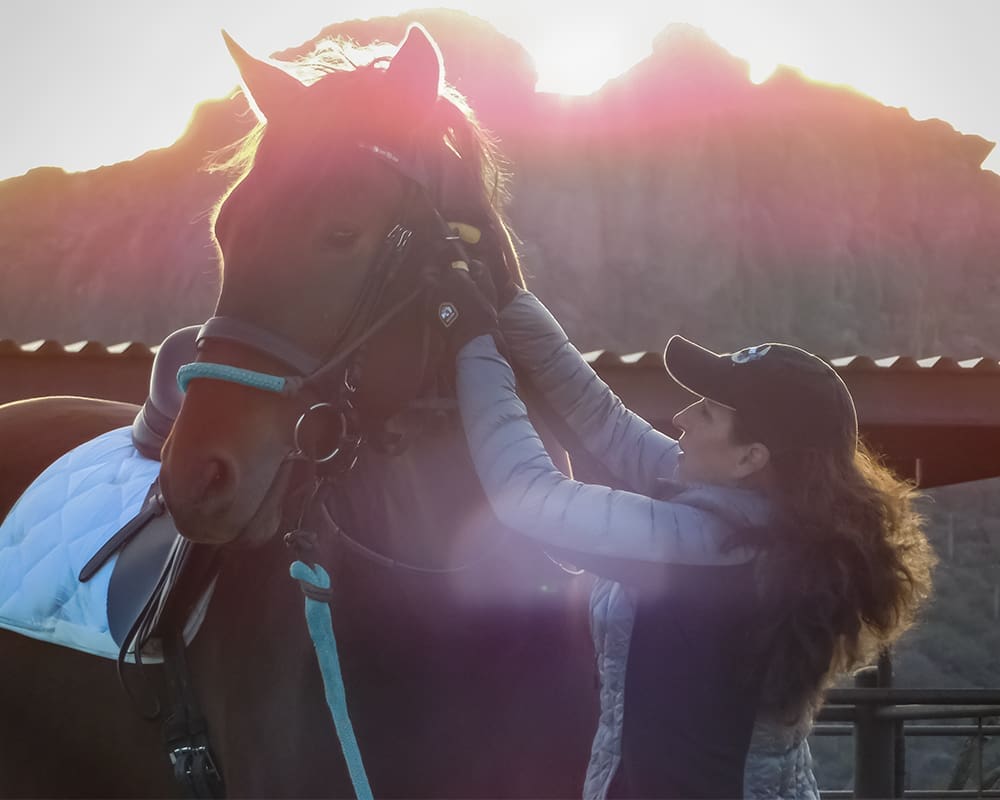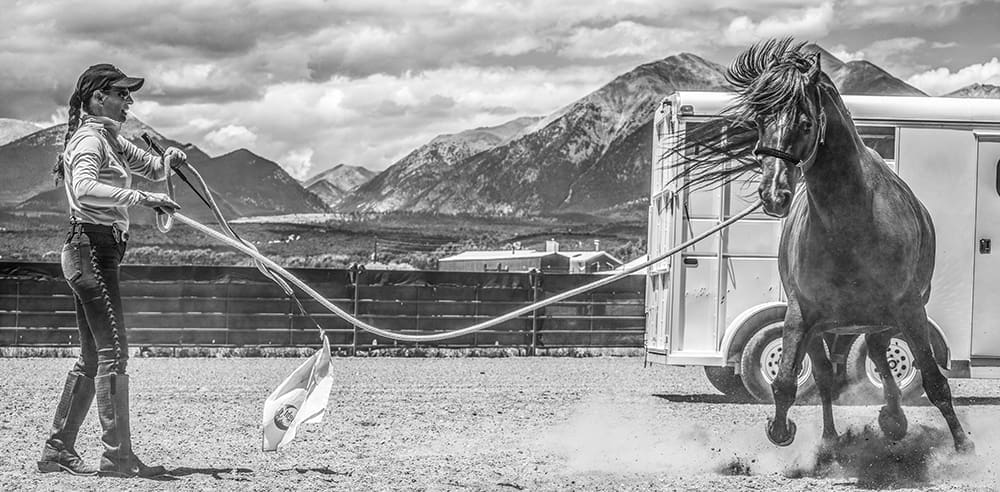
I see riders that cannot keep their horse going at trot or canter—the horse is constantly threatening to break gait and the rider is constantly saying, “No, don’t do that.” I see horses cutting corners and the rider pulling the outside rein. I see horses pulling toward the gate/barn/buddy and the rider seemingly oblivious, pulling the horse in the other direction but never confronting the issue.
Horses are sneaky about this stuff and long before the rider realizes she is playing along, the horse has trained the rider to keep pedaling the horse to go or keep pulling the outside rein to stay on the right path. By playing along, the rider is complicit in the horse’s disobedience and proving to the horse that she will tolerate the disobedience, rather than address it. Or worse, demonstrating to the horse that she is unaware of its disobedience.
Generally, the biggest problem in a codependent relationship is that the rider is unaware of the horse’s behavior—riding in a way that tells the horse that she is blissfully ignorant about the way he is supposed to act. It helps to know how a properly trained horse is supposed to act, but the most important thing is to become aware of the horse’s disobedience, call him out on it and break the cycle of codependency (often easier said than done).
What is an Obedient Horse?
A properly trained saddle horse should travel in the speed and direction the rider wants, until the rider says to do something different. Once you tell the horse to do something, let’s say slow-trot in this direction, the horse should continue trotting in that direction, at the speed the rider dictates, without pedaling or pulling, until the rider says to do something different—like turn, slow down or speed up.
Obedience in a riding horse means that it goes on the path dictated entirely by the rider, at a speed chosen by the rider, without micromanagement from the rider. The horse should have no decision-making authority in this regard (imagine letting a thousand-pound flight animal go in the speed or direction it wanted). If the rider is constantly telling the horse to slow down, speed up or stay on the path, it means the horse is constantly threatening disobedience. The horse is holding the rider hostage and making the rider complicit in its disobedience, while the rider seems blissfully ignorant of the horse’s actions.
Everyone who has ever taken a horsemanship clinic from me, has heard me talk about “The Golden Moments.” It’s the time at the beginning of the ride when the rider should test the horse’s level of obedience and make her expectations abundantly clear to the horse. If the rider is not proactive at this time, the tables will turn. The horse will test the rider to see what it can get away with, and how aware the rider is of the horse’s actions.
Awareness is the Answer
Horses are herd animals and are very aware of the actions and emotions of the animals around them—including humans. Since most of their communication with other horses is through postures, gestures and body language, they are particularly adept at reading others—again, including humans. They are relationship-oriented animals, so they have a high level of awareness of how other animals are acting.
Humans, on the other hand, are often oblivious to the vibe they are giving off to a horse. The rider often lets her self-doubt, lack of confidence or lack of skill/knowledge show, by not following through on directives and overlooking small infractions. The rider tends to be overly focused on herself, how she’s sitting, what she’s doing with the reins, heels down, eyes up, hands in front of the saddle…. Gradually, the horse starts pushing boundaries, to see what it can get away with, until the rider notices.
Once the rider becomes more aware of the horse, its actions and its motivations, the game is over for the horse. It’s the rider’s lack of awareness that gives the green light to the horse to act however he wants.
Turning the Tables
Once the rider is aware of the horse’s disobedience, it’s easy to bring the game to an end. Part of his strategy involves the rider’s lack of awareness, so simply calling the horse out on his behavior—treating it as a violation—will go a long way to stop the behavior. In general, horses do not want to get in trouble. The rider should scold the horse in such a way that he gets the message, “I know what you are doing, now knock it off!”
In addition to recognizing the disobedience, it’s also important to understand the motive. Why is the horse acting this way? How does he benefit? What does he want? By understanding the horse’s motivations, it will be far easier to correct him in a manner that takes away all the benefits. Perhaps a few examples will help.
If I detect a horse is veering from the path I dictated by pulling toward the gate/barn/buddy, I now know that 1) my horse is in a disobedient frame of mind, and 2) that he wants to go in a certain direction. My first goal is to let the horse know, I know what he is doing. So instead of politely steering him back to the path I chose, I will scold with my voice (calling him out) and maybe bounce/slap my leg on his ribs, perhaps bump one rein. Then, and most importantly, I’ll make sure I turn the horse a few times—with each turn being AWAY from his objective. I want to be very careful that my horse does not gain any ground and in fact ends up farther away from his objective.
If I am riding in the arena and the horse is pulling toward the middle, refusing to stay on the rail unless I hold him there, my first step is awareness. If I just go around the arena holding the outside rein so his nose is to the wall and he’s going around the arena counter-bent, the horse thinks I don’t know what he’s doing. So I may bump the outside rein as I bump/slap with my inside leg and scold with my voice. Then, I will make a few changes of direction, turning him into the fence each time—never turning him toward the middle. The changes of direction are abrupt and cause him to come closer to the rail with each turn. Then I’ll put him back to the rail, relax my hands and see if he decides to stay there without me holding him. If not, scold and turn into the fence a few times. Once he learns that every time he leans into the middle, it will buy him 3-4 abrupt turns into the fence, he will give it up.
Beware of Whack-a-Mole
When horses misbehave, they generally do the same thing at the same place, every time. They tend to be predictable in their disobedience. This is good because it gives the rider the opportunity to think ahead of the horse and be proactive—take charge BEFORE the horse does his little trick. Being one step ahead of the horse lets him know that the rider is onto his antics.
However, there is a saying in horse training… “it always gets worse before it gets better.” This refers to the fact that if a horse has been getting away with disobedience for some time and you address it—call him out on it—he is unlikely to just stop and never do it again. Especially if it’s a tactic that’s been working well for him; he’s reluctant to give it up so he might put up a little fight before he totally caves. It’s important to stay-the-course, even if he gets mad.
Often, when a horse is acting up at a specific place—either in the arena or on the trail—and you address it, that same disobedient behavior will pop up in a new place. This is quite normal; it’s a tactic the horse has reason to believe will work again, so he tries the same thing someplace else. When you call him out on that, he may try it again someplace different. But eventually, he will give it up.
If a horse has gotten away with disobedience for some time, it may make him mad that his tricks aren’t working. It may temporarily exacerbate the disobedience or cause a bit of a tantrum. The job of the rider is to stay the course without throwing gas on the flame. In other words, be insistent and persistent, but do not agitate the horse further. No need to fight; just wait for the horse to give it up.
Horses may not be great problem-solvers, but they can be very clever in their disobedient tactics and very manipulative of others. Often this manipulative behavior leads to a co-dependent relationship, causing the rider to hold the horse on the path or hold the horse in a speed. But once the rider is aware of the horse’s manipulations, calls the horse out on it, refusing to succumb to the tactic, the game is usually over for the horse.
Join Julie Goodnight’s Interactive Membership to get personal training from Julie. HERE



